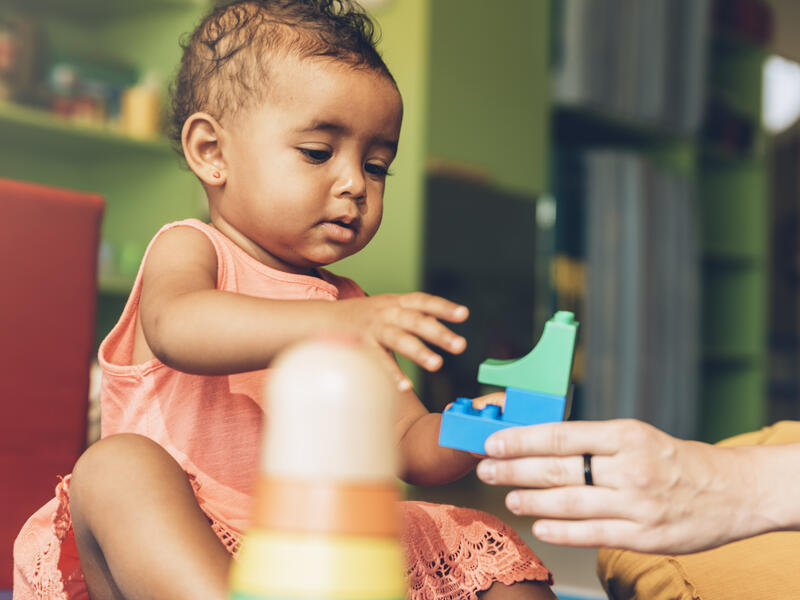Infants learn many physical skills from 6 to 12 months old – crawling, standing, and eventually walking to name a few. These are skills that require your infant to use large muscles in the legs and body.
Your infant is also learning how to use their small muscles in their hands and fingers. This takes a lot of coordination and practice.
It starts with your infant simply learning how to open and close their fingers around toys or maybe even your cheek. At first, your infant may have a hard time understanding how to let go of an object. You can teach your infant to let go by gently opening their fingers.
At the beginning of this growth period, your infant will “rake” things toward themselves but in just a few months they will be able to grasp items with their thumb and first or second finger. You’ll see your infant learn how to grasp an object at will, then be delighted when they can drop or throw the item.
If you leave small toys on the tray of your infant’s highchair or in the playpen, chances are they will fling them down and then call loudly for someone to retrieve them so they can do it again. With this in mind, you may want to consider what kind of toys you provide – hard objects could cause damage and noise in your house. You may want to provide your infant softer objects like balls of various sizes, colors and textures.
Toys and activities for fine motor skills
A fun activity that helps your infant’s developing skills is to roll a ball on the floor to your infant. At first your infant may just slap the ball but eventually they will learn how to roll it back in your direction.
With this improved coordination, your infant can now investigate the objects they encounter more thoroughly. You will see your infant pick them up, shake them, bang them, and pass them from hand to hand. Your infant will likely be curious about toys with moving parts — wheels that spin, levers that can be moved, hinges that open and close.
Blocks are another favorite toy at this age. In fact, nothing motivates an infant to crawl quite as much as a tower waiting to be toppled. Toward the end of this period, your infant may even start to build towers of their own by stacking one block on top of another. Nesting cups or stacking toys are also very good for infants to build their hand and finger skills.
For more information on how to support your infant’s healthy development, attend the class “How I Learn.”
Learn more
- Babies learn while on the move
- Take steps to keep your little explorer safe
- The best toy for your baby is your attention
…
Posted In Children's, Family Medicine, Parenting
